The humble raincoat is so often a life-saver. There is no other item so vital for your survival that you should take into the bush as some type of shelter (even if it is only the humble $2 space blanket which so easily slips in your breast pocket). For most people though that will be their raincoat, so it is important to realise just what you can do with it.
As with so many things such realisations often only come after a lifetime of failing to recognise them (hopefully this is not a fatal mistake!) I recently realised (after nearly 70 years) for example that toothpaste is a liquid. All the disputes about how to best handle toothpaste tubes come to an abrupt end after you understand this, and thenceforth always keep the tube in an upright position standing on its lid. The toothpaste always comes out easily then and keeps on doing so until the very last (unexpected you will find out) drop (or dollop)!
Of course the same is true (ie failing to recognise things) eg when people continue to wear their raincoats when caught out for prolonged periods eg overnight in heavy freezing rain. Water strips away heat at least twenty times more efficiently than does air (why it is often used to cool things; – think car radiators for example). In such a situation as the above this becomes a life-threatening situation which must be addressed by taking your raincoat off! And holding or securing it above you to create an air gap. Like this. See Raincoat Shelter
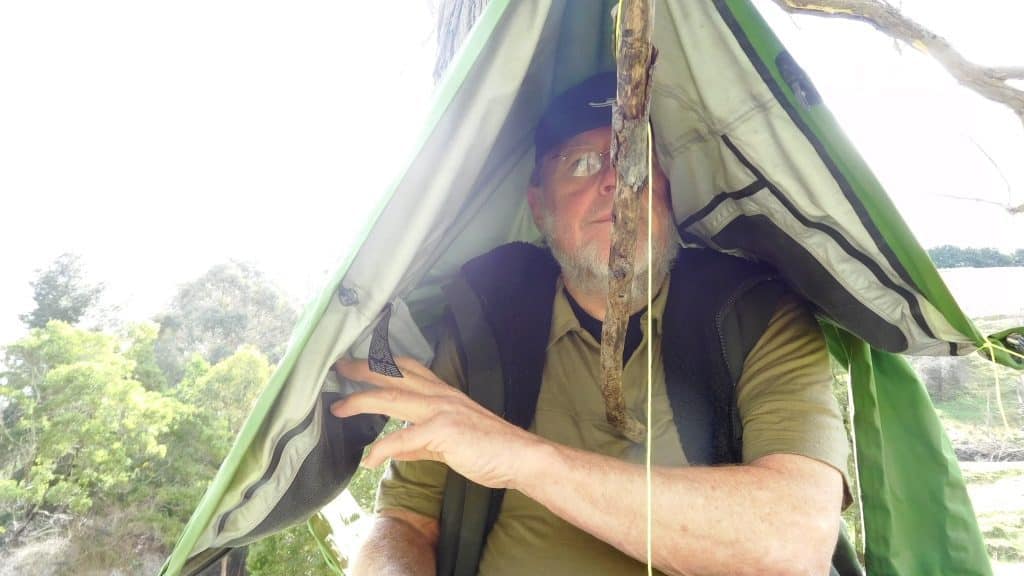
It is a good idea to sew a few tie-outs to your raincoat to obviate this, but at least always remember to take a length of string (as shown) with you. It has a thousand and one uses – and Sam Gamgee just can’t be wrong, can he? See Rope – Don’t Leave Home Without It. Of course you might have the skill to fashion some of your own – in the Victorian bush the ubiquitous ‘bootstrap bush’ is good for that, but not much good unless you know how to identify it!
It is a point I made again in the post Pitching the Poncho where these World’s Lightest Tarp Clips might come in handy. They also make good fishing floats. I have observed before (but I will again) that a space blanket can be pitched like this too, so that two of them will make you very snug indeed on an unexpected night in the bush – so long as you can light a fire.
That is, pitch it like this:
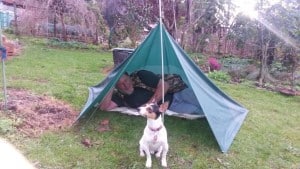
The Importance of a Roof is a point I have made again and again (I know), but I don’t want myself or you to die unnecessarily. As I mentioned in that post when cold rain is really sheeting over you heat loss is inexorable, particularly in humidity conditions you will often encounter in such a situation when all your clothes become saturated underneath your raincoat so that you lose all their insulative ability. That is just what was happening to Della here on the South Coast Track Fiordland NZ in 2016. She was becoming really cold but warmed up quickly when I found her a respite in a decrepit woodshed for a short break for lunch.
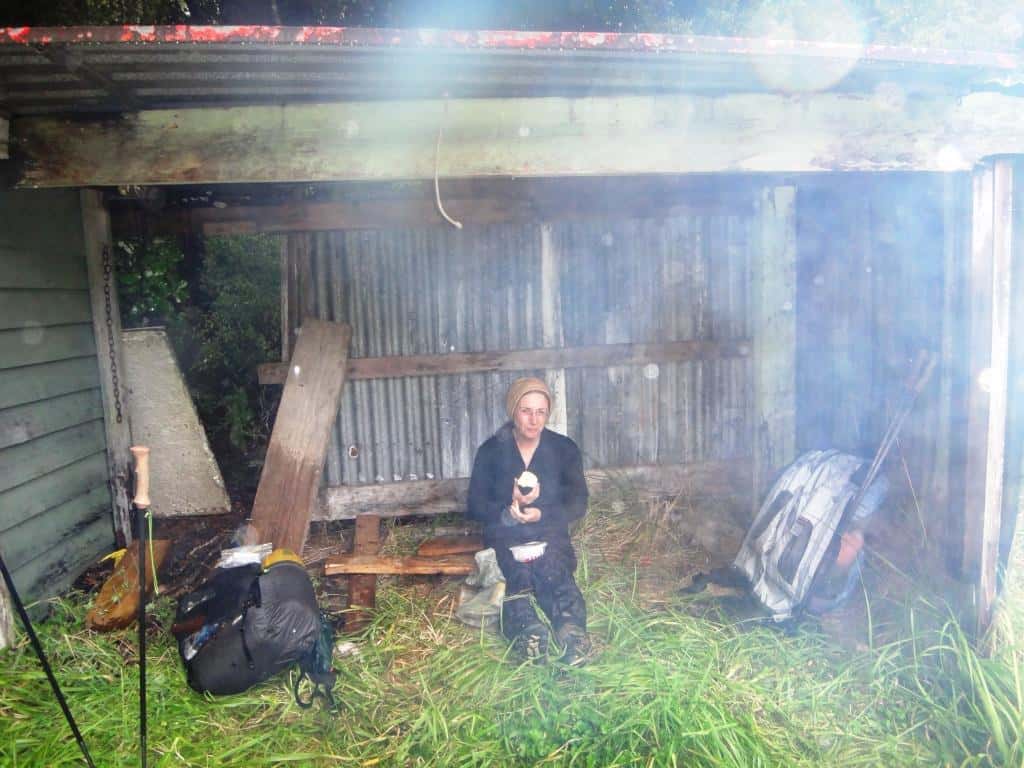
The same thing was happening to my daughter Irralee on the Dusky Track in 2009 but on that occasion (as always) I had my hammock and tarp with me which I quickly erected so that we could sit and have lunch under its shelter while she rewarmed. A shelter which can be used with a hammock is really important as you may not be able to camp on the ground. That is why I have been developing ‘tents’ which double as hammock tarps. First the 10 x 10 Tarp, then the Deer Hunter’s Tent #2 and finally the Grey Flyer. I continue to refine the design and will add a better floor soon. The point is you are very much safer with a tarp and groundsheet (plus hammock) than you are with a tent!
Now, those tie outs will also be useful for closing the top of the triangle on this poncho tarp or either of these simple square tarps to make a perfectly luxurious dry shelter overnight. The raincoat will form a triangle around 2 feet on each side which will keep out an astonishing amount of weather. Try it sometime!
This one is my old 7′ x 7′ hammock tarp (See Ultralight Hammock) which I have slept perfectly dry under on many an otherwise dismal wet night. I have it pitched a little high here for sleeping. This is my sitting pitch. I would drop it down when I was going to bed (and probably tie my raincoat at the entry in case it came in too wet). I was traveling pretty light there (twenty years ago) . I see that was a 3/4 length NeoAir at 260 grams (before my back got so bad) and a 230 grams cuben backpack.
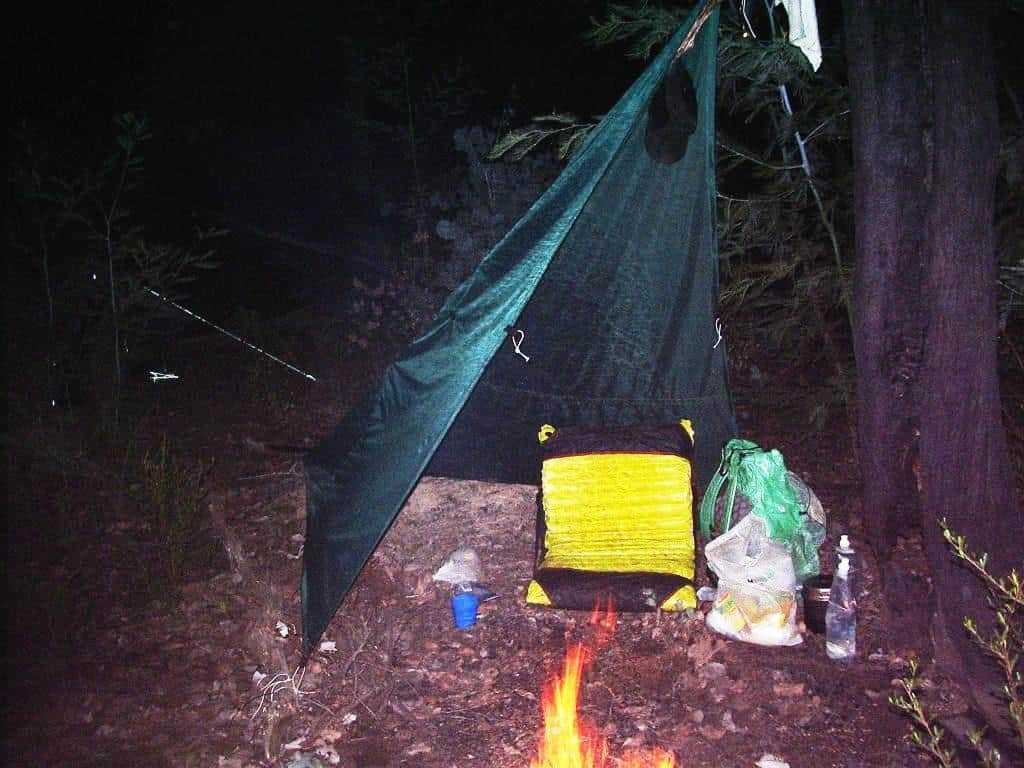
This one is a chunk of cuben about 8′ on each side which weighs only about 150 grams. Sub zero conditions overnight in both cases.
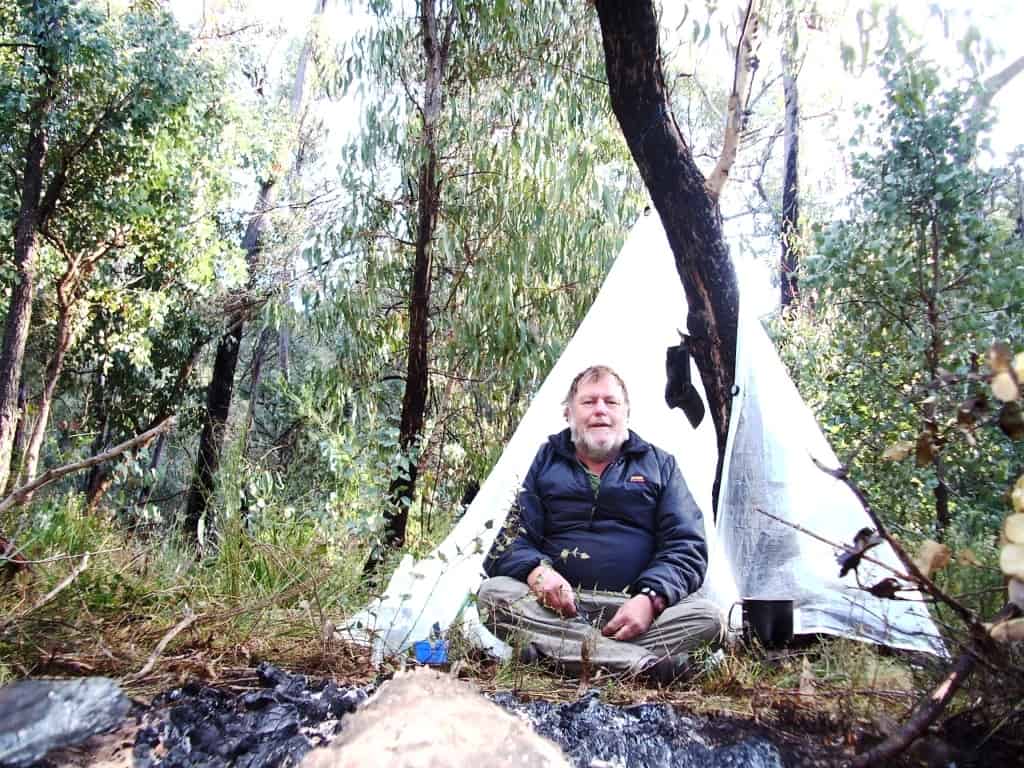
Your raincoat will close that gap up like this (mod to my Grey Flyer tent) so that even the humble 7′ x 7′ tarp whose 10′ ridgeline will give you really ample rainproof shelter – even at a squeeze for two!
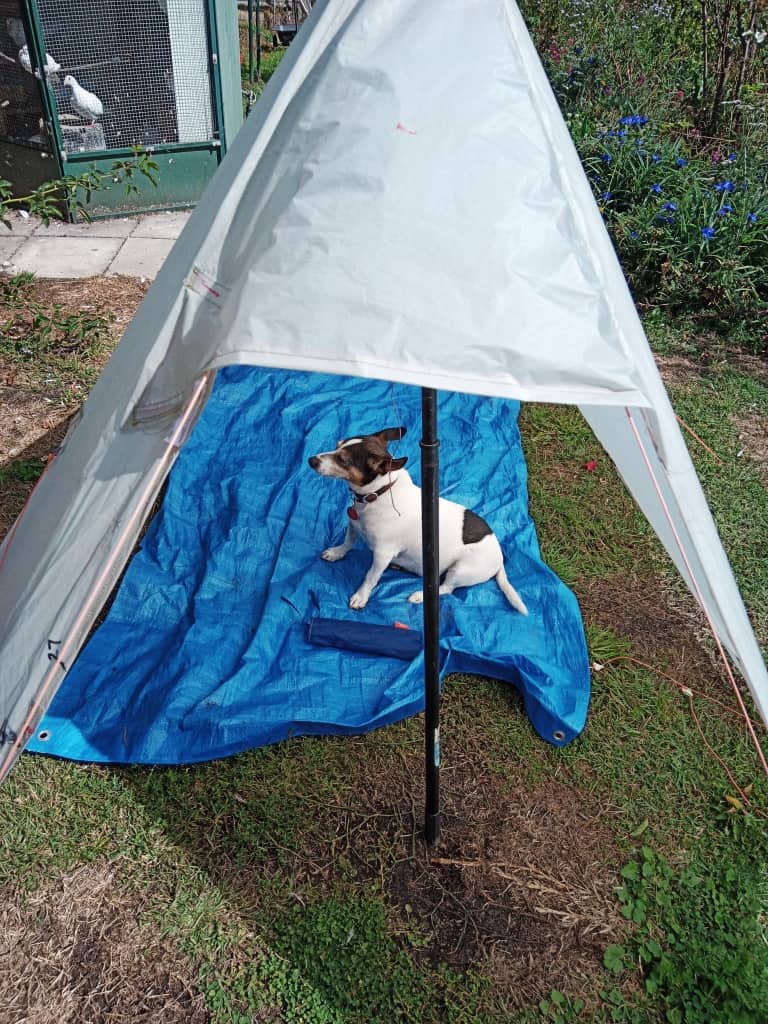
And what about the swag? You ask. I have ‘always’ tied my raincoat around my waist by the sleeves when not in use and it always comes loose and works its way off (despite my callipygy!), but just like the toothpaste, there is a better way – emulate the swagmen of yore. See Also Humping Your Bluey. It will never fall down this way.
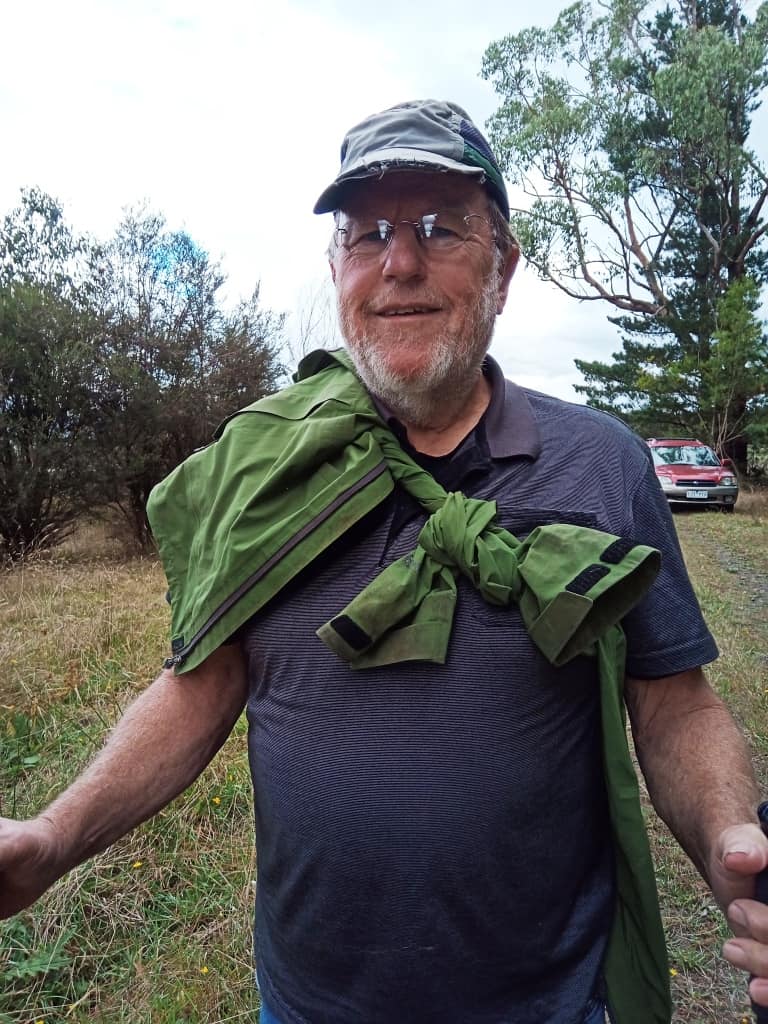
Maybe I should have rolled it up more decorously – but you get the point.
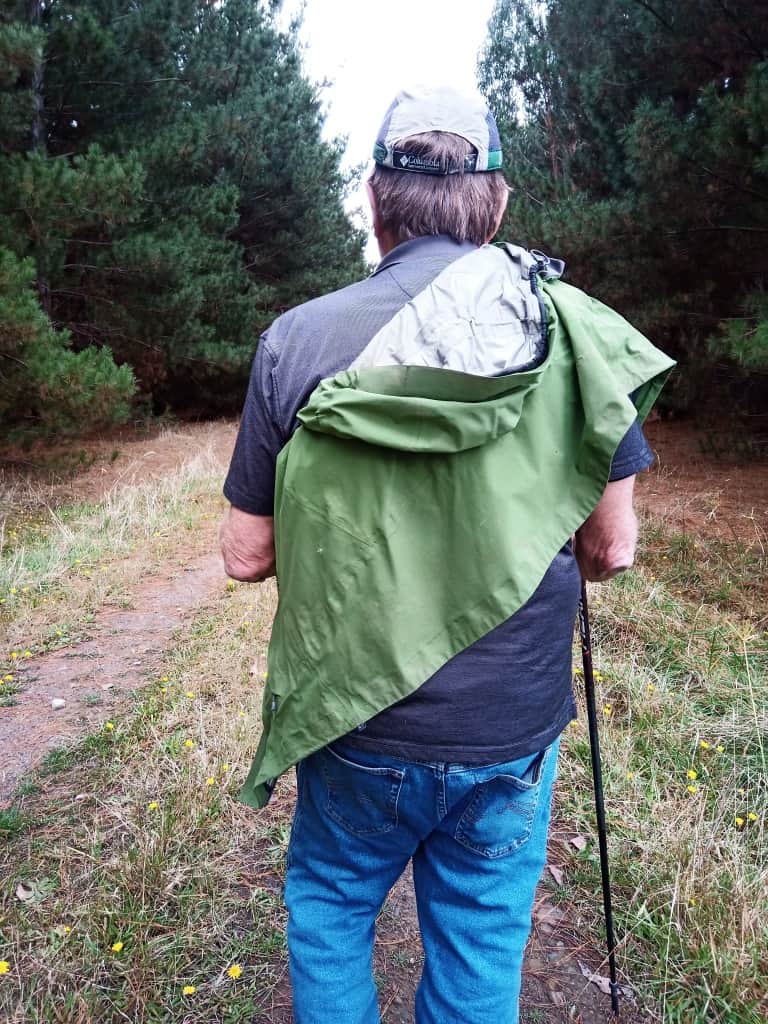
See Also:
Some other tips:
https://www.theultralighthiker.com/2015/08/26/worlds-lightest-tarp-clip/
https://www.theultralighthiker.com/2018/11/04/beginning-hiking/
http://www.theultralighthiker.com/how-to-light-a-fire-in-the-wet/
http://www.theultralighthiker.com/rope-dont-leave-home-without-it/
http://www.theultralighthiker.com/finding-your-way/
http://www.theultralighthiker.com/the-lie-of-the-land/
http://www.theultralighthiker.com/the-importance-of-a-roof/
http://www.theultralighthiker.com/carry-a-knife/
http://www.theultralighthiker.com/if-you-could-only-carry-two-things-in-the-bush-what-would-they-be/
http://www.theultralighthiker.com/ultralight-poncho-tent/
http://www.theultralighthiker.com/the-pocket-poncho-tent/
http://www.theultralighthiker.com/naismiths-rule/
http://www.theultralighthiker.com/weather-lore/
http://www.theultralighthiker.com/walking-the-line/
http://www.theultralighthiker.com/follow-your-nose/
http://www.theultralighthiker.com/how-long-till-sundown/
http://www.theultralighthiker.com/how-to-avoid-being-wet-cold-while-camping/
http://www.theultralighthiker.com/fire-on-the-snow/
http://www.theultralighthiker.com/river-crossings/
http://www.theultralighthiker.com/an-open-shelter/
http://www.theultralighthiker.com/raincoat-shelter/
